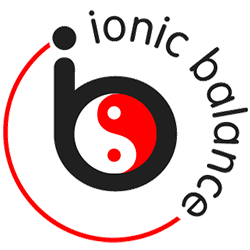Negative Ions
What are Negative Ions?
Ions are invisible particles, either molecules or atoms, which bear an electric charge. Atoms, for instance, consist of an atomic nucleus that contains neutral neutrons and positively charged protons, as well as orbiting electrons that are negatively charged. When an atom is in a neutral condition, the number of protons (+) and electrons (-) is equal. When the number of protons and electrons is not the same, the particle becomes an ion that is either positively or negatively charged.
 |
Positive Ion (Cation): an atom (or molecule) that has lost one or more electrons due to a high-energy impact. Natural forces that generate positive ions include the decay of radioactive minerals, radon gas, forest fires, lightning and ultraviolet rays. |
 |
Negative Ion (Anion): an atom (or molecule) that has gained one or more extra negatively charged electrons. Negative ions are naturally generated by evaporating water, ocean surf, waterfalls and ionic minerals such as Tourmaline. |
How are Negative Ions generated naturally?

There are also certain minerals that emit Negative Ions for example Tourmaline and Germanium.
Can Negative Ions be generated artificially?
Negative Ions can be artificially generated by electrical devices such as Air Ionisers which use an external power source (electricity) to generate large quantities of Negative Ions. Our USB Personal Air Purifier Ioniser and our 8 in 1 Room Air Purifier Ioniser both use electricity to generate Negative Ions.

Facts about Negative Ions
- Tasteless, Odourless.
- Urban areas typically have much lower concentrations of Negative Ions in the air than rural areas.
- Ionisation is mandatory in many European and Russian Hospitals.
- In March of 1999, Good Housekeeping Magazine had its engineers test an ionizer by using a smoke test, and found that it cleared out the smoke in a tank.
- A recent study by the U.S. Dept. of Agriculture found that ionising a room led to 52% less dust in the air, and 95% less bacteria in the air (since many of the pollutants found in the air reside on floating dust particles).
How Negative Ions Purify the Air
Virtually all particles in the air have a positive charge, while negative ions have a negative charge. In which case, negative ions and particles magnetically attract to one another. When there is a high enough concentration of negative ions in the air, they will attract to floating particles in large numbers. This causes the particle to become too heavy to remain airborne. As a result, the particle will fall out of the air, and will then be collected by normal cleaning activities, such as vacuuming or dusting.

In nature, negative ions are generated by processes such as sunlight, lightening, waves from the ocean, and from waterfalls. "Concrete Jungles" minimize the natural production of negative ions by disrupting the delicate electrical balance between the atmosphere and the earth. Ioniser/ionic air purifiers recreate them with electrode pins ("needlepoints") to electrically produce negative ions.
What Ionic Products are available?
The most popular product we stock is the Ionic Balance Band (worn on the wrist) which uses Tourmaline to naturally emit Negative Ions. We carry a range of ionic products suitable for humans and pets.
Our USB Personal Air Purifier Ioniser is ideal for travel and can be plugged into any USB socket.
Are there any scientific studies on Negative Ions?
Ancient peoples recognized that the air is "electric" so to speak, but it is thought that the formal study of ions did not begin until fairly recently. In 1899, two German scientists, Elster and Geitel, discovered that there are particles in the atmosphere that carry electricity. These particles were later named "air ions" by the British scientist Faraday. The word "ion" was taken from the Greek language, in which it means to "go" or "wander about."
To date over 5000 studies have been conducted on Negative Ions. Many of these are available online.

